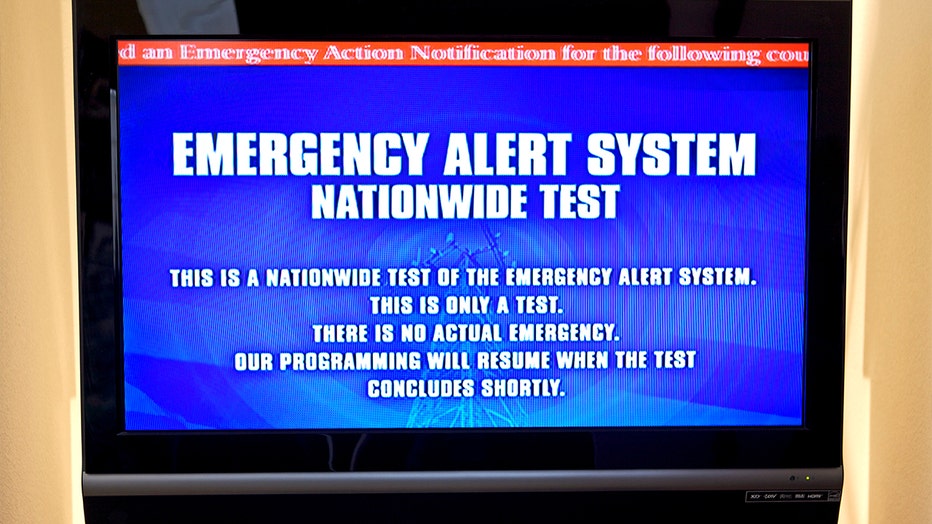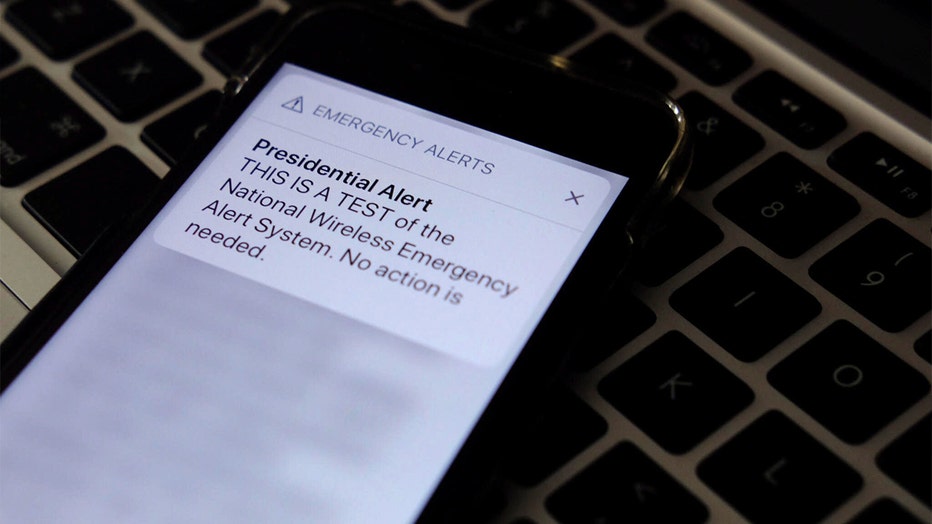National emergency alert test planned by FEMA, FCC: Here's what you should know
PHOENIX - Federal officials say a national test of a system that aims to provide members of the public with emergency warnings will take place in October.
The purpose of the test is "to ensure that the systems continue to be effective means of warning the public about emergencies, particularly those on the national level," read a portion of a statement posted to the website of the Federal Emergency Management Agency.
Here's what you should know.
When is the test taking place?
According to the statement, the test is set to take place at approximately 2:20 p.m. Eastern Time (1:20 p.m. Central Time, 12:20 p.m. Mountain Time, 11:20 a.m. Pacific Time) on Oct. 4.
In the same statement, officials note that the test will take place on Oct. 11 if there is widespread severe weather or other significant events on Oct. 4 that leads to a postponement.
What is being tested?
The test will involve testing the capabilities of the Emergency Alert System (EAS) and the Wireless Emergency Alerts (WEA), according to officials.
EAS? WEA? What are these things?
Both the EAS and WEA are systems that are set up to provide emergency warnings, according to federal officials. However, the two systems are set up to provide warnings to different devices.
EAS

(Photo by Kim Kulish/Corbis via Getty Images)
The EAS, according to FEMA's website, is a system that, when activated, interrupts radio and television broadcasts in order for an emergency alert to be aired.
According to the Encyclopaedia Britannica, the EAS is the replacement of an earlier system called the "Emergency Broadcast System" in 1997. The EBS was put into use in the 1960s.
On their website, officials with the National Weather Service say the EAS is frequently activated for "imminent and dangerous weather conditions." In addition, federal law also requires radio and television stations that take part in the EAS to conduct weekly and monthly tests.
WEA

(Photo Illustration by Theo Wargo/Getty Images)
On FEMA's website, the WEA is described as a system that sends short emergency messages from authorized government entities to mobile devices that can receive such alerts.
The alerts, according to the website, are sent via cell phone towers, and can target a specific area.
Alerts sent via WEA, according to officials, can feature English and Spanish language alerts. An English alert is required when a Spanish alert is sent.
According to an article by the Associated Press, the WEA was launched in 2012. While digital device users can opt out of missing children messages and alerts for natural disasters, presidential alerts, which are issued at the direction of the White House and activated by FEMA officials, cannot be opted out of.
What's going to happen on Oct. 4?
According to federal officials, cell towers will send out the WEA test for about 30 minutes.
"During this time, WEA-compatible wireless phones that are switched on, within range of an active cell tower, and whose wireless provider participates in WEA, should be capable of receiving the test message," read a portion of the statement. "For consumers, the message that appears on their phones will read: ‘THIS IS A TEST of the National Wireless Emergency Alert System. No action is needed.’"
A Spanish language test message, according to officials, should also be seen on phones with the main menu set to Spanish.
Meanwhile, the EAS test will last about one minute, according to officials. It should be seen on television or heard on radio for people who are tuned in to a radio or television station that is taking part in the test.
What should I do during the test?
According to federal officials, the on-screen messages for both the EAS and WEA test contain a note to the public that no action is required on their part.
Are tests like these normal?
According to FEMA officials, national EAS tests have been done regularly, and are also legally required.
On their website, FEMA officials state that under a bill that became law in 2016, FEMA is required to conduct a nationwide EAS test not less than once every three years.
Officials state that national EAS tests have been conducted six times from 2011, including:
- November 2011
- September 2016
- September 2017
- October 2018
- August 2019
- August 2021
What have the tests uncovered?
Previous national tests have uncovered certain problems with the system.
In April 2013, FCC officials released a report on the November 2011 EAS test, which noted that the test suffered from poor audio quality, alongside other issues that are either technical or organizational in nature.
The same report, however, noted that the test is considered to be a success, and showed that a national alert will, if activated, "perform as designed."
For the 2021 test, an FCC report noted that some stations in various parts of the U.S. were not able to receive the test message due to a variety of issues, including:
- Problems related to the performance of equipment designed to receive EAS messages
- Problems related to antenna
- Poor signal
- Problems related to clock settings
- Problems related to remote location of stations
- Problems related to lightning
The same report notes that based on test results, they conclude the system will largely perform as designed if it is activated without the availability of the internet.
(The Associated Press (AP) contributed to this report.)

